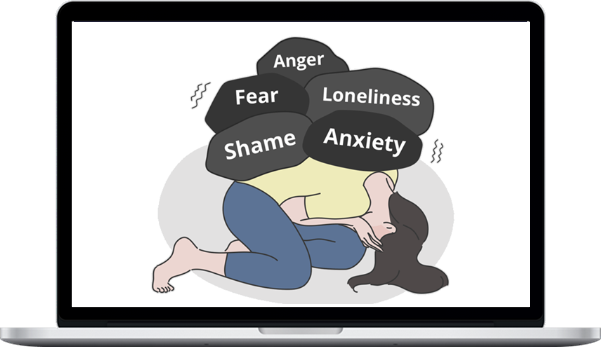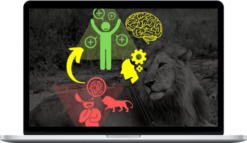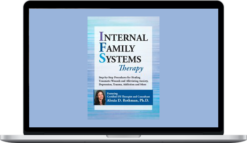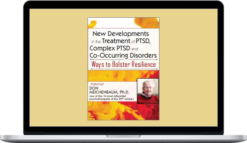NICABM – How To Help Clients Develop Tolerance For Emotional Distress
$197.00 $44.00
»Delivery: Within 24hs
Description
NICABM – How To Help Clients Develop Tolerance For Emotional Distress
Description Of How To Help Clients Develop Tolerance For Emotional Distress
How to Help Your Client Build Their Tolerance for Distress (with Practical Skills They Can Use in Real Time) woman under rocksEmotional distress – it’s messy, it’s painful, even overwhelming. Most of us will do anything to just not feel it. But here’s the thing . . .
When a client can’t tolerate difficult emotions, it can cost them dearly.
It can trap them in fear and loneliness. It can wreak havoc on their most precious relationships. And it can lead them to “numb out” and try to escape the pain through substance abuse, binge-eating, excessive sleeping, and even self-harm.
Not only that, but when a crisis hits, the inability to tolerate painful emotions can send your client spiraling even further into avoidant behaviors that only ramp up their distress.
But how do you “sell” clients on the idea that usually, the way out of distress is through it?
And beyond that, how do you help them lean in to the experience of distress so they can learn to tolerate it – instead of relying on harmful coping strategies that only make their lives worse?
We turned to 21 of the world’s top experts to hear how they work with clients to help them develop greater distress tolerance. Here are their best strategies that you can start using with your clients today.
What You’ll Learn In How To Help Clients Develop Tolerance For Emotional Distress
Expert Strategies to Help Clients Develop Tolerance for Emotional Distress
Understanding Difficult Emotions at the Level of the Nervous System
Christine Padesky, PhD Deb Dana, LCSW
Rick Hanson, PhD Janina Fisher, PhD
- What’s Going On In the Nervous System When Your Client Seems Unable to Tolerate Distress
- Two Common Missteps in Working with Hypoarousal (and How to Avoid Them)
Expert Strategies to Help Clients Build Distress Tolerance in the Aftermath of Trauma
Christine Padesky, PhD Ron Siegel, PsyD
Janina Fisher, PhD Laurel Parnell, PhD
- Three Priorities When Helping Traumatized Clients Learn to Tolerate Distress – and How to Achieve Them
- The Counterintuitive First Step to Building Distress Tolerance After Trauma
- Three Strategies to Help Your Client Regain a Sense of Control After Trauma
How to Help Clients Tolerate What Feels Intolerable (and Why This Critical Skill Is Key for Healing)
Peter Levine, PhD Shelly Harrell, PhD Kelly Wilson, PhD
Christine Padesky, PhD Ron Siegel, PsyD Miguel Gallardo, PsyD
Deany Laliotis, LICSW Charles Ridley, PhD
- The Go-To Strategy Many Clients Use to Manage Distress (and What It’s Costing Them)
- Four Specific Factors That Can Transform Your Client’s Ability to Tolerate Distress
- A 2-Step Approach to Help Your Client Cultivate Resilience
How to “Sell” Clients on the Benefits of Tolerating Distress (When It’s the Last Thing They Want to Feel)
Shelly Harrell, PhD Miguel Gallardo, PsyD
Bill O’Hanlon, LMFT Ron Siegel, PsyD Christine Padesky, PhD
- The Four Specific Costs of Avoiding Distress
- One Idea That Can Challenge Your Client’s Impulse to Avoid Feeling Distress
- Key Questions to Help Clients Connect to a Different Future and Spur Life-Changing Action
How to Help Clients Recognize Whether They’re Experiencing Stress or Distress (and Why This Distinction Can Be So Important)
Kelly Wilson, PhD Michael Yapko, PhD
Rick Hanson, PhD Joan Borysenko, PhD Ron Siegel, PsyD
- What We Really Mean When We Talk About “Healthy Stress”
- Two Cognitive Skills That Can Be Critical for Building Distress Tolerance
- The Crucial Link Between Decision-Making and Distress Tolerance (and How to Frame It for Your Client)
How to Create a Personalized Plan to Boost Your Client’s Distress Tolerance Skills
Christopher Willard, PsyD Zindel Segal, PhD Shelly Harrell, PhD
Ron Siegel, PsyD Bill O’Hanlon, LMFT
Christine Padesky, PhD Rick Hanson, PhD
- One Way to Shift Your Client Out of a Hyper-Focus on Their Distress
- A 4-Step Exercise to Help Your Client Break Down Exactly What They’re Feeling When Distress Takes Over
- Specific Grounding and Anchoring Skills Clients Can Use to Pull Themselves Out of Emotional Distress
- Contraindications for Using Grounding Strategies
How to Grow Your Client’s Capacity to Manage Distress
Peter Levine, PhD Joan Borysenko, PhD Bonnie Goldstein, PhD
- Three “Containment” Exercises to Help Your Client Build Endurance in the Face of Distress
- How to Help Your Client Create Strategies They Can Use to Ease Distress (Even Outside of Sessions)
- Two Ways to Help Clients Develop Tools to Self-Regulate
How to Help Clients Co-Regulate to Dial Down Distress That’s Wreaking Havoc on Their Relationships
Ron Siegel, PsyD Christine Padesky, PhD Stan Tatkin, PsyD, MFT
- How an Overreliance on This One Specific Habit Can Cause Relationship Problems
- A 3-Step Approach to Help Your Client Shift into Co-Regulation (and Why This Shift Is So Essential)
- Two Experiential Approaches to Help Couples Learn to Work Through Distress Together
Creative Interventions to Transform Your Client’s Ability to Tolerate Distress
Joan Borysenko, PhD Christine Padesky, PhD
Ron Siegel, PsyD Lynn Lyons, LICSW
- An Incremental Approach to Help Clients Use Imagery to Relieve Distress
- One Powerful (But Often Overlooked) Resource That Can Boost Your Client’s Distress Tolerance Skills
- Two Ways to Help Your Client Recognize Their Distress Is Temporary (Even When It Might Not Feel That Way)
About NICABM
We proudly provide continuing education for practitioners who are dedicated to being the best in their craft. Our goal is to develop programs that connect you with the top experts and the latest strategies in the field, to help you achieve better outcomes, more quickly with each of your clients.
About Ruth Buczynski, PhD
Dr. Ruth Buczynski is a licensed psychologist and founder and president of The National Institute for the Clinical Application of Behavioral Medicine (NICABM). NICABM helps physicians, nurses, psychologists, social workers, and counselors – practitioners who have some of the most significant and life-changing missions on the planet – provide cutting-edge, research-based treatment strategies to their patients. For more than 35 years, NICABM has offered accredited training and professional development programs to thousands of practitioners worldwide.
More courses from the same author: NICABM
Delivery Policy
When will I receive my course?
You will receive a link to download your course immediately or within 1 to 21 days. It depends on the product you buy, so please read the short description of the product carefully before making a purchase.
How is my course delivered?
We share courses through Google Drive, so once your order is complete, you'll receive an invitation to view the course in your email.
To avoid any delay in delivery, please provide a Google mail and enter your email address correctly in the Checkout Page.
In case you submit a wrong email address, please contact us to resend the course to the correct email.
How do I check status of my order?
Please log in to HealingCourse account then go to Order Page. You will find all your orders includes number, date, status and total price.
If the status is Processing: Your course is being uploaded. Please be patient and wait for us to complete your order. If your order has multiple courses and one of them has not been updated with the download link, the status of the order is also Processing.
If the status is Completed: Your course is ready for immediate download. Click "VIEW" to view details and download the course.
Where can I find my course?
Once your order is complete, a link to download the course will automatically be sent to your email.
You can also get the download link by logging into your HealingCourse account then going to Downloads Page.
Related products
Total sold: 3
Total sold: 2
Total sold: 4









